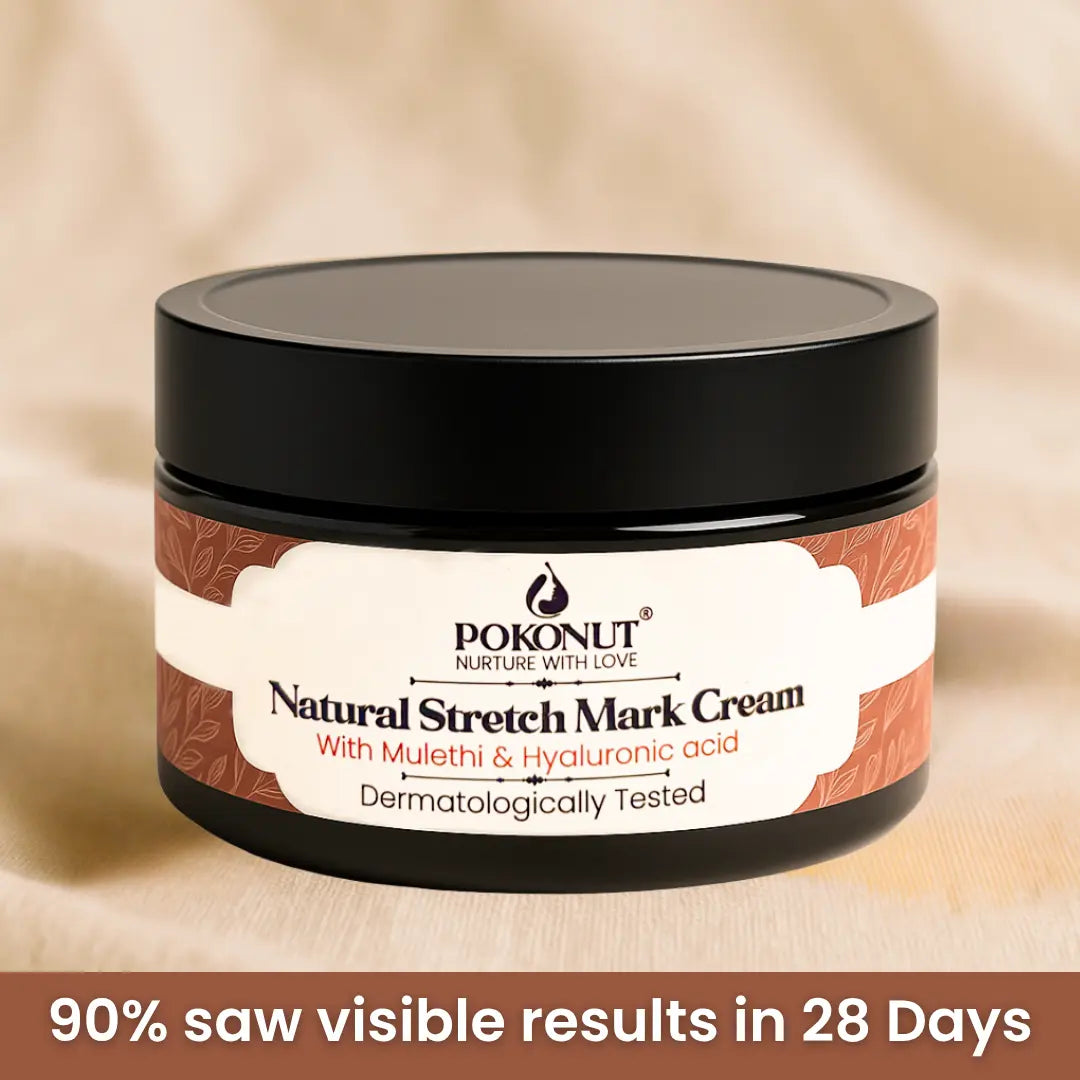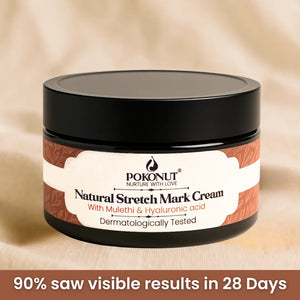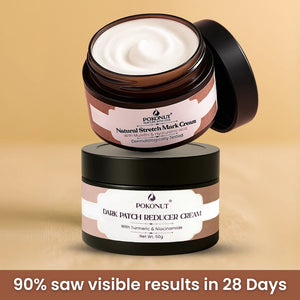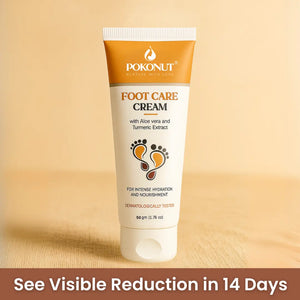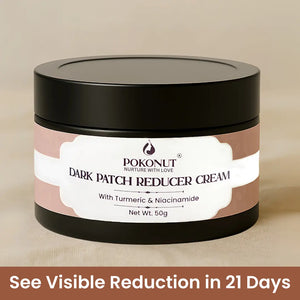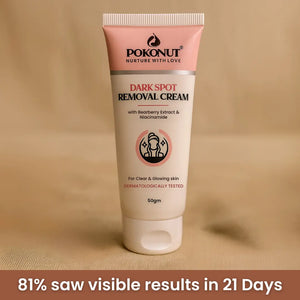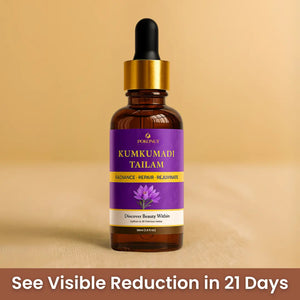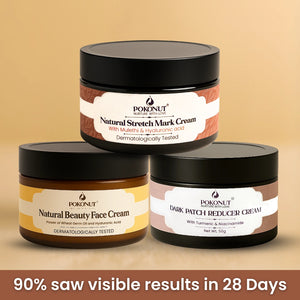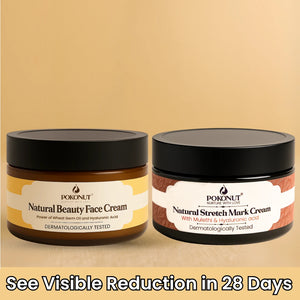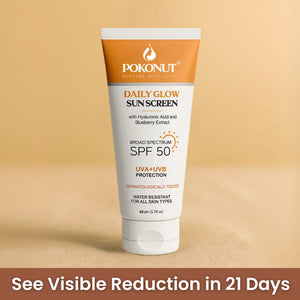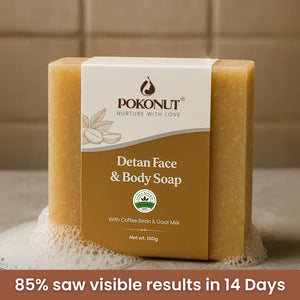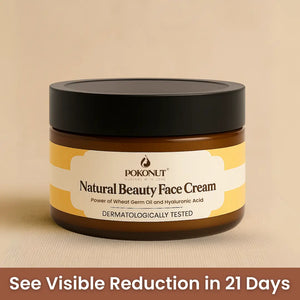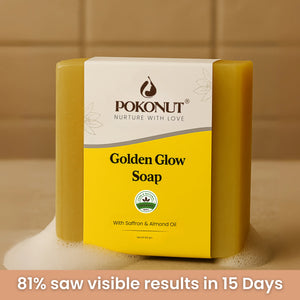What Does Kojic Acid Do to Your Skin Over Time?

Medically Reviewed By:
Dr. Mousumi Dash, BAMS
Written by Our Editorial Team
Are you looking to curb those stubborn dark spots on your skin with kojic acid? This naturally occurring compound comes from fungi and fermented foods. People love it for its powerful skin-brightening abilities.
Kojic acid targets tyrosinase, an enzyme that produces melanin in your skin. Studies show that a 1% concentration can reduce melasma by up to 58% with consistent use. You'll find kojic acid in concentrations between 1-2% [-4]. The ingredient appears in soaps, serums, creams, and cleansers. Your skin might become more sensitive to sun damage while using kojic acid. This piece from Pokonut covers everything you should know about this powerful ingredient and safe ways to maximize its benefits.
What is Kojic Acid and How Does It Work?
Kojic acid is a natural chemical compound that we found that there was in metabolites from several fungi species. Japanese scientists first identified it and named it after "koji" - their term for malted or fermented rice. This organic acid easily dissolves in water, ethanol, and acetone, which makes it useful for many different applications.
Derived from fungi and fermented foods
Kojic acid stands out from synthetic skin brighteners because it occurs naturally during fermentation. We produced it mainly from Aspergillus fungi (especially A. oryzae) and certain Penicillium species. You can find kojic acid as a natural byproduct in many traditional Japanese foods and drinks like sake (rice wine), soy sauce, and other fermented items.
Scientists can get this compound through chemical synthesis via pyranoid 3,2-enolones or more commonly through direct biological fermentation of glucose by Aspergillus species. This process yields impressive production rates of 70-90% based on carbon source. On top of that, it shows up in many fermented foods without changing their taste.
Inhibits tyrosinase to reduce melanin
The sort of thing I love about kojic acid is how it works on skin. Its main goal is to block melanin production - your body's natural pigment that gives color to your skin, hair, and eyes.
Kojic acid follows a specific process - it stops tyrosinase, which is a key enzyme needed for melanin synthesis. It acts as a chelating agent and binds to copper ions in tyrosinase's active site. When this happens, tyrosine (an amino acid) can't transform into melanin.
This blocking action happens in two ways: it shows competitive inhibitory effect on monophenolase activity and mixed inhibitory effect on diphenolase activity of tyrosinase. Kojic acid is also a "slow-binding inhibitor," which means it works gradually after attaching to the enzyme.
Used in soaps, serums, creams, and powders
Skincare companies have created many products with kojic acid because it lightens skin effectively. Most cosmetic formulations contain 1% or less of this ingredient.
Kojic acid appears in various delivery systems, including:
-
Serums and treatments (higher concentrations for targeted effects)
-
Creams and lotions
-
Cleansers
-
Soaps (particularly popular as "kojic acid soap")
-
Powders for professional use
Beyond skin brightening, kojic acid is a great way to get antioxidant, anti-inflammatory, and antimicrobial benefits. These properties make it valuable not just for hyperpigmentation but also for overall skin health.
Visible Benefits of Kojic Acid Over Time
Regular use of kojic acid brings several impressive benefits that make it a skincare routine essential. Users typically see results within two weeks of application, though best results take 4-6 weeks.
Fades dark spots and acne scars
Kojic acid's most important benefit lies in fading stubborn dark spots. The acid works well to lighten post-inflammatory hyperpigmentation from acne breakouts. Your dark spots gradually fade as kojic acid blocks the enzyme that produces melanin. The acid targets only areas with excess pigmentation and won't change your overall skin tone.
Reduces melasma and sun damage
Kojic acid proves remarkably effective against melasma - those brown or grayish patches on your face. Research shows that 1% kojic acid reduced participants' melasma by 58%. The acid helps repair photoaging by lightening sunspots and minimizing visible sun damage. Women dealing with "pregnancy mask" find kojic acid especially helpful.
Improves skin tone and brightness
Kojic acid boosts your skin's overall radiance beyond just spot treatment. Your complexion becomes clearer and brighter without harsh chemicals or bleaching agents. The acid balances pigmentation across your face, so your skin looks more luminous and vibrant.
Delivers anti-aging effects
Kojic acid works as a powerful anti-aging ingredient through several ways. The acid neutralizes aging-causing free radicals as an antioxidant. Your skin looks younger as age spots and sun damage fade. On top of that, it protects elastin and collagen from breaking down due to environmental stressors.
Helps with acne due to antimicrobial properties
Kojic acid's antimicrobial properties help curb acne-causing bacteria, along with its brightening effects. The acid fights off common bacterial strains even in small amounts. These features make it great for treating active breakouts while fading dark marks they leave behind.
How to Use Kojic Acid Safely and Effectively
You need to understand what kojic acid does and how to apply it correctly to realize its full potential. The right application will give maximum results with minimal side effects.
|
Step |
What to Do |
Why It Matters |
|
1. Start with low concentrations (1–2%) |
Begin with 1–2% kojic acid products. Use 2–3 times per week, gradually increasing usage. Sensitive skin users can start at 0.5%. |
Reduces risk of irritation and helps your skin adjust gradually. |
|
2. Choose the right product format |
Use serums for targeted facial spots. Use kojic acid soap for body pigmentation. Apply to clean, dry skin. |
Different formats serve different needs — soaps are ideal for body, serums for facial areas. |
|
3. Apply at night + moisturize |
Use kojic acid at night. Follow with a hydrating moisturizer. Only apply a small amount to affected areas. |
Enhances absorption and minimizes dryness caused by the acid. |
|
4. Wear sunscreen daily |
Use broad-spectrum SPF 30 or higher every morning. Reapply every 2 hours when exposed to sunlight. |
Kojic acid increases sun sensitivity; sunscreen prevents further pigmentation and damage. |
|
5. Avoid damaged or irritated skin |
Don’t apply kojic acid to broken or inflamed skin. Always patch test before full use. |
Prevents reactions like redness, burning, or rashes — especially on sensitive skin. |
Risks, Side Effects, and When to Stop
Kojic acid can brighten your skin effectively, but you need to understand its potential risks to use it safely. Natural ingredients can cause adverse reactions if you have sensitive skin, so knowing the right time to be cautious makes a difference.
Can cause contact dermatitis
-
Especially in sensitive skin types
-
Symptoms include redness, itching, rashes, swelling, or irritation
-
More common with concentrations above 1%
-
Always do a patch test on the inner wrist before full use
Increases sun sensitivity
-
Kojic acid reduces melanin, making your skin more vulnerable to UV damage
-
Increases risk of sunburn, pigmentation, and long-term sun damage
-
Daily sunscreen (SPF 30+) is non-negotiable during use
May cause dryness or redness
-
Overuse or combining with strong actives like retinoids/AHAs can dry or inflame the skin
-
Starting with lower concentrations helps reduce this risk
-
Gradually increase usage only after skin adjusts
Stop use if irritation persists
-
Discontinue immediately if you experience constant redness, burning, or itching
-
Do not apply kojic acid to broken or irritated skin
-
Mild sensitivity may be normal, but ongoing discomfort is a red flag
Consult a dermatologist for long-term use
-
Especially if planning to use beyond 2–3 months
-
Dermatologists often recommend cycling or taking breaks between treatments
-
Pregnant or breastfeeding women should consult a doctor before use
Conclusion
Kojic acid is a powerful solution for people dealing with hyperpigmentation. In this piece, you'll learn how this natural ingredient targets the root cause by blocking tyrosinase, which stops melanin production in areas with excess pigmentation.
You'll start seeing changes after two weeks of regular use. The best results show up between 4-6 weeks. Your dark spots will fade, melasma will lighten, and your skin tone will become more even and radiant. It also provides antimicrobial benefits that help curb acne while its antioxidant properties fight aging signs.
Using this potent ingredient safely should be your priority. Start with products that have lower concentrations (1-2%). Apply them at night and always follow up with moisturizer. Daytime sunscreen is crucial since kojic acid substantially increases your skin's UV sensitivity.
Despite its impressive benefits, kojic acid has some drawbacks. Improper use can lead to contact dermatitis, increased sun sensitivity, and potential dryness. To protect your skin from unwanted reactions, do a patch test before full application and stop using it if you notice ongoing irritation.
When used properly and patiently, kojic acid delivers remarkable results. While it's not an overnight fix, this ingredient safely corrects pigmentation without harsh bleaching agents. Note that consistency is essential—your dedication to application and sun protection directly shapes your results. For anyone tackling stubborn dark spots, melasma, or uneven skin tone, kojic acid is worth thinking over as a valuable addition to your skincare routine.
FAQs
Q1. How long does it take to see results from kojic acid?
Typically, you may start noticing initial results after two weeks of consistent use. However, optimal effects usually become visible within 4-6 weeks of regular application.
Q2. Is it safe to use kojic acid daily?
Daily use of kojic acid can increase skin sensitivity and potentially cause irritation. It's best to start with 2-3 applications per week and gradually increase frequency as your skin adapts. Always follow product instructions and use sunscreen during the day.
Q3. Can kojic acid make dark spots worse?
While kojic acid is designed to lighten dark spots, improper use or increased sun exposure without protection can potentially worsen hyperpigmentation. Always use sunscreen and follow application guidelines to avoid this issue.
Q4. What are the long-term effects of using kojic acid?
Long-term use of kojic acid can lead to improved skin tone, reduced hyperpigmentation, and some anti-aging benefits. However, it may also increase sun sensitivity, so consistent sun protection is crucial. Consult a dermatologist for extended use beyond a few months.
Q5. How should kojic acid be incorporated into a skincare routine?
For best results, apply kojic acid products to clean, dry skin at night. Start with a low concentration (1-2%) and follow with a moisturizer. Always use sunscreen during the day and avoid combining with other potent actives initially to minimize irritation.
About Doctor :

